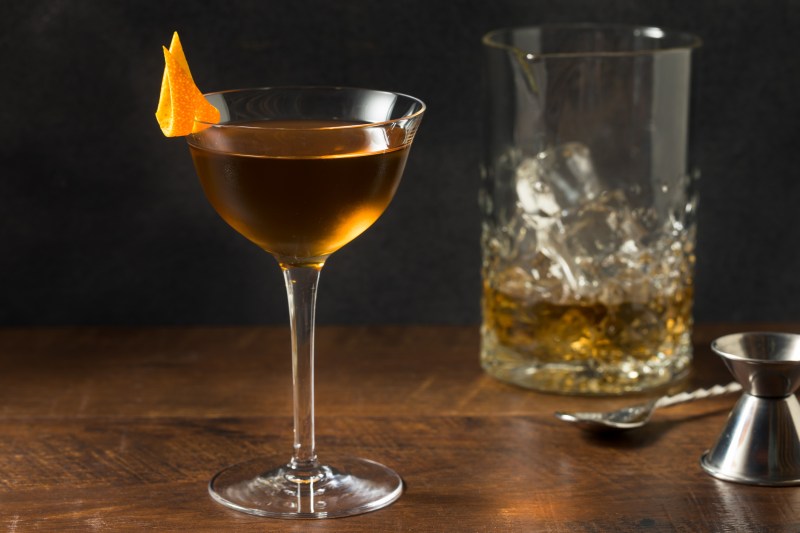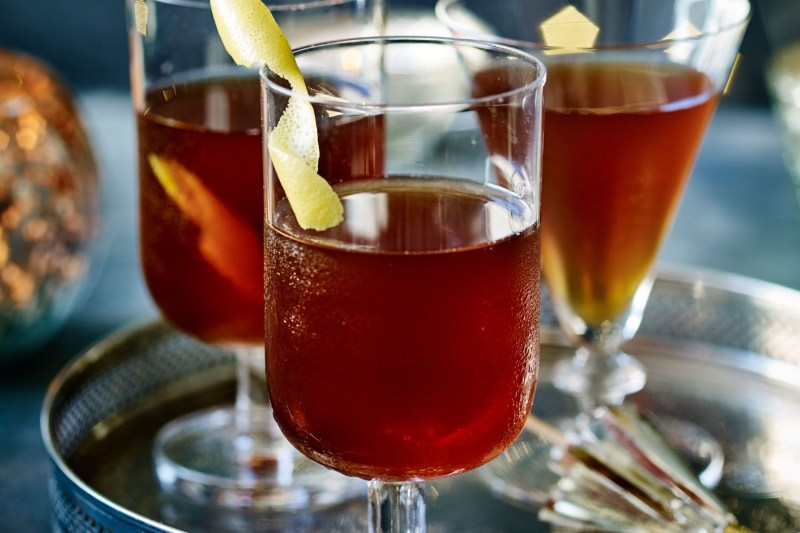A late 19th-century classic, the Bamboo cocktail embodies a deliciously delicate balance of sherry and vermouth, making it an ideal aperitif no matter the season. The low alcohol content also makes it a fine nightcap or even a “shim” when you need a break between heavier cocktails. Sherry drinks were quite the rage in the early 1900s, though they largely fell out of fashion by the middle of the century and have only recently enjoyed a resurgence. The hazy outlines of the Bamboo’s original construction and lack of a base spirit allow for plenty of improvisation, allowing you to fine-tune the recipe (nudging it sweeter or drier) to your own tasting preferences.
An International Original

Like many drink recipes, the origins of the Bamboo cocktail are shrouded in mystery. According to William T. Boothby’s classic 1908 book The World’s Drinks and How To Mix Them, the Bamboo was conceived by a German bartender named Louis Eppinger. He apparently developed the recipe while working in a hotel bar in Japan that was backed by Americans, lending the whole endeavor a decidedly international flavor that was rather surprising for the time. Given the prominence bamboo plays in Japanese culture, the cocktail’s name seems to pay homage to its country of origin.
Related Guides
There’s just one minor problem: The first printed reference to the Bamboo cocktail appeared three years before Eppinger set foot in Japan. In September 1886, several U.S. newspapers, including the Western Kansas World, note a “new and insidious drink” becoming all the rage in New York City barrooms, and ascribe an unnamed Englishman as its creator. Since the mysterious mixologist remains unknown, however, Eppinger tends to get the credit. Which is perhaps fair enough. After all, even if he wasn’t the first to mix up a Bamboo, he likely perfected the recipe and helped introduce American cocktail culture to a whole new swath of global society.
The Odd Couple: Sherry & Vermouth

The Bamboo cocktail is typically made with fino sherry, which is the most delicate of sherry styles and features a flavor profile that is crisp, nutty, tangy, and decidedly dry. Those who want to mix things up can swap the fino for manzanilla, which imparts an even fresher taste. And once you’ve had the classic, you can start to push the envelope by experimenting with other sherries such as an amontillado, which will impart heavier and more complex notes like tobacco, wood, and hints of spice. (And if you go this route, be sure to read Edgar Allen Poe’s twisted and perfectly conceived short story The Cask of Amontillado after mixing up a sherry cocktail.)
Vermouth is the other essential in the Bamboo and usually appears in equal proportion to sherry in the modern version. As it was initially conceived, however, vermouth was given short shrift, with a ratio of two or even three parts of sherry to one part of vermouth. Modern imbibers might also balk at the bone-dry nature of the classic cocktail. To sweeten the deal, some mixologists prefer to use a 50-50 blend of both sweet and dry vermouth. You can also embrace sweet vermouth entirely, though at this point you’re actually drinking an Adonis rather than a Bamboo cocktail. You can also tinker around the margins by adding a teaspoon of simple syrup and a dash of rich, spicy
Bamboo Cocktail Recipe

Ingredients:
- 1.5 oz. dry sherry
- 1.5 oz. dry vermouth
- 1 dash of orange bitters
- Lemon twist, for garnish
Method:
- Combine all ingredients with ice in a mixing glass and stir
- Strain into a cocktail glass
- Express lemon peel over the drink, then garnish the glass with the peel



